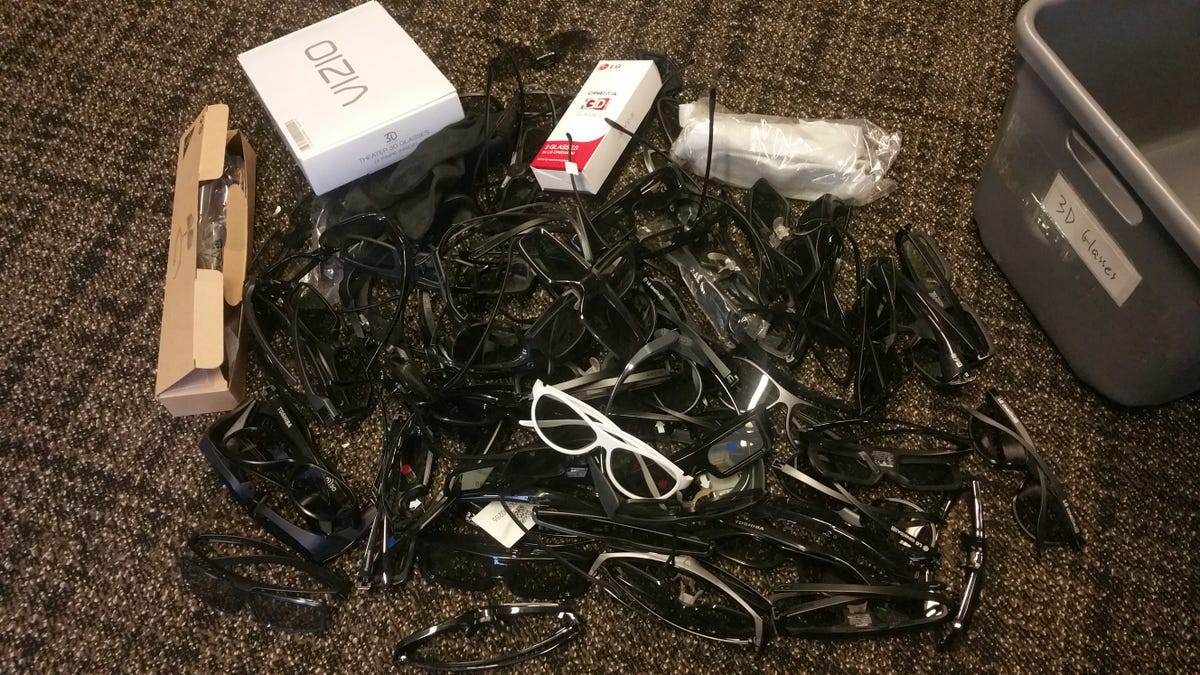Shambling corpse of 3D TV finally falls down dead
The bespectacled zombie lies face down in the dirt, thanks to LG and Sony dropping support from their 2017 TVs. Will it ever rise again?

It's been a walking corpse for the last couple of years, and now 3D TV finally looks dead.
LG and Sony, the last two major TV makers to support the 3D feature in their TVs, will stop doing so in 2017. None of their sets, not even high-end models such as their new OLED TVs, will be able to show 3D movies and TV shows.
Samsung dropped 3D support in 2016; Vizio hasn't offered it since 2013. Other smaller names, like Sharp, TCL and Hisense, also failed to announce any 3D-capable TVs at CES 2017.
The 3D feature has been offered on select televisions since 2010, when the theatrical success of "Avatar" in 3D helped encourage renewed interest in the technology. In addition to a 3D-capable TV, it requires specialized glasses for each viewer and the 3D version of a TV show or movie -- although some TVs also offer a simulated 3D effect mode.
Despite enthusiasm at the box office and years of 3D TVs being available at affordable prices, the technology never really caught on at home. DirecTV canceled its 24/7 3D channel in 2012 and ESPN followed suit a year later. There are plenty of 3D Blu-ray discs still being released, such as "Star Wars: The Force Awakens," but if you want to watch them at home you'll need a TV from 2016 or earlier -- or a home theater projector.
I asked LG's Tim Alessi, director of new product development, why his company's TVs no longer have the feature. "3D capability was never really universally embraced in the industry for home use, and it's just not a key buying factor when selecting a new TV," he said. "Purchase process research showed it's not a top buying consideration, and anecdotal information indicated that actual usage was not high. We decided to drop 3D support for 2017 in order to focus our efforts on new capabilities such as HDR, which has much more universal appeal."
Sony's reply was similar, if less detailed. "Based on current market trends we decided not to support 3D for our 2017 models," a representative told me.
Those market trends are clear: Sales of 3D home video gear have declined every year since 2012. According to data from the NPD Group, 3D TV represents just 8 percent of total TV sales dollars for the full year of 2016, down from 16 percent in 2015 and 23 percent in 2012. Native 3D-capable Blu-ray players fell to just 11 percent of the market in 2016, compared to 25 percent in 2015 and 40 percent in 2012.
"I think [the fact that Sony and LG dropped 3D] says that consumers have moved on to other purchase motivators for TV," says Ben Arnold, executive director at NPD. "Things like 4K/UHD, HDR and even smart have become the key features along with screen size that consumers are buying on."
Will 3D TVs rise again?
My own anecdotal experience as a TV reviewer is similar to LG's. Over the years, the one thing most people told me about the 3D feature on their televisions was that they never used it. Sure, some people occasionally enjoyed a 3D movie on Blu-ray, but the majority of people I talked to tried it once or twice, maybe, then never picked up the glasses again.
In six years of testing TVs I've accumulated quite a few 3D glasses.
I don't think most viewers will miss 3D. I have never awarded points in my reviews for the feature, and 3D performance (which I stopped testing in 2016) has never figured into my ratings. I've had a 3D TV at home since 2011 and I've only used the feature a couple of times, mainly in brief demos to friends and family. Over the 2016 holiday break I offered my family the choice to watch "The Force Awakens" in 2D or 3D, and (after I reminded everyone they had to wear the glasses) 2D was the unanimous choice.
But some viewers will be sad to see the feature go. My colleague David Carnoy, for example, enjoys it at home on a regular basis with his 2015 LG 65EF9500 OLED TV. "It's a shame they're killing it after 3D was finally perfected with passive technology on a 4K-resolution OLED TV," he said. "If it had started out this good, it might still be alive today."
Judging from my twitter feed, and the comments on my CES report that mentioned LG dropping the feature from its entire 2017 OLED line, Carnoy's not alone.
There's even a change.org petition for LG to bring back the feature, which currently stands at 3,981 supporters.
Of course 3D TV could come back to life, but I'd be surprised if it happened before TV makers perfect a way to watch it without glasses. Research in that arena is ongoing, especially in theaters, but for the remainder of this year at least, 3D TV is dead.
What's next, curved TV? We'll have to wait until 2018 to find out.
CES 2017: Everything you need to know from the world's biggest tech show.
Best TVs of 2017: The greatest sets of the year just gone.

